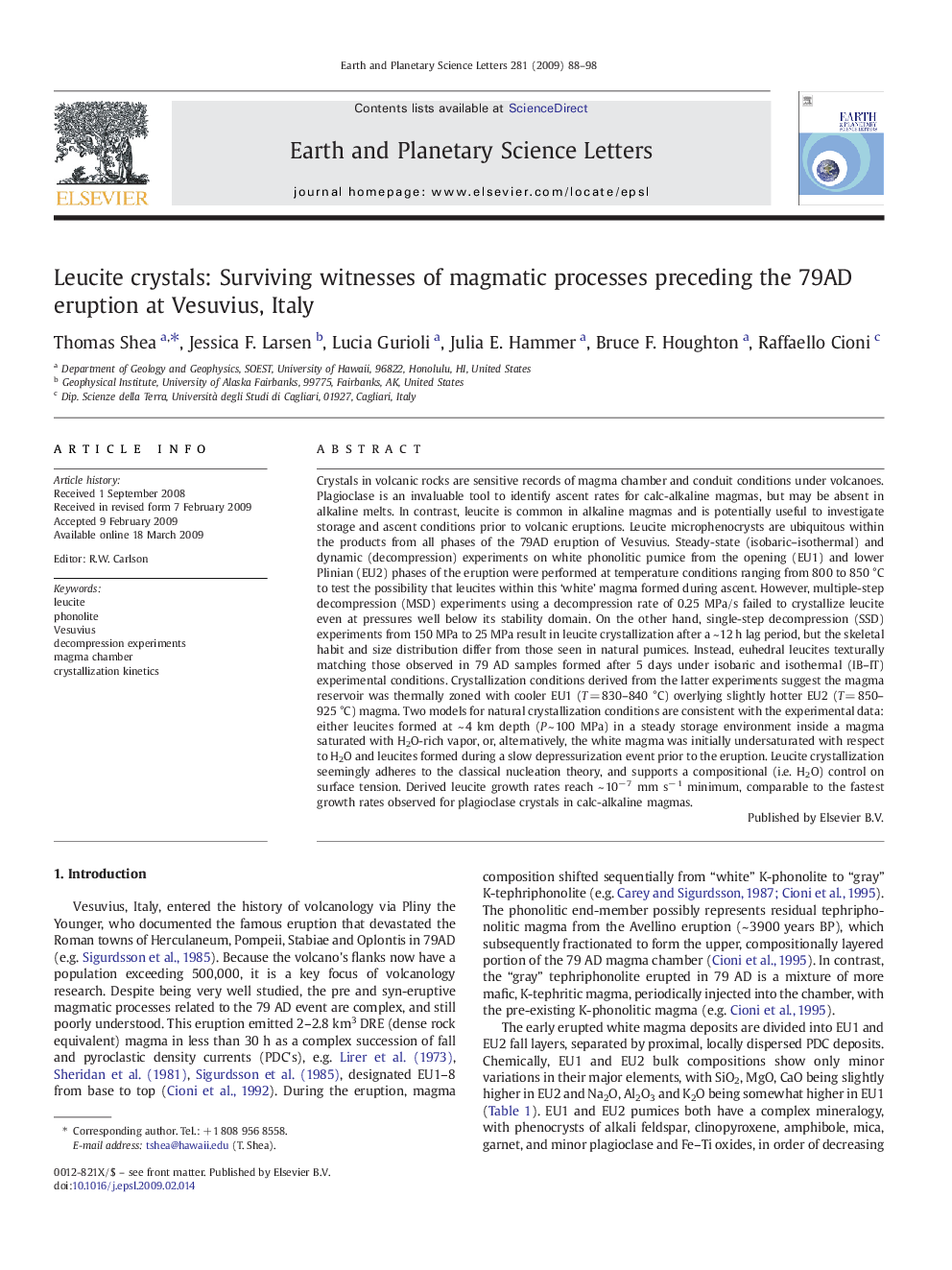| کد مقاله | کد نشریه | سال انتشار | مقاله انگلیسی | نسخه تمام متن |
|---|---|---|---|---|
| 4679230 | 1634875 | 2009 | 11 صفحه PDF | دانلود رایگان |

Crystals in volcanic rocks are sensitive records of magma chamber and conduit conditions under volcanoes. Plagioclase is an invaluable tool to identify ascent rates for calc-alkaline magmas, but may be absent in alkaline melts. In contrast, leucite is common in alkaline magmas and is potentially useful to investigate storage and ascent conditions prior to volcanic eruptions. Leucite microphenocrysts are ubiquitous within the products from all phases of the 79AD eruption of Vesuvius. Steady-state (isobaric–isothermal) and dynamic (decompression) experiments on white phonolitic pumice from the opening (EU1) and lower Plinian (EU2) phases of the eruption were performed at temperature conditions ranging from 800 to 850 °C to test the possibility that leucites within this ‘white’ magma formed during ascent. However, multiple-step decompression (MSD) experiments using a decompression rate of 0.25 MPa/s failed to crystallize leucite even at pressures well below its stability domain. On the other hand, single-step decompression (SSD) experiments from 150 MPa to 25 MPa result in leucite crystallization after a ~ 12 h lag period, but the skeletal habit and size distribution differ from those seen in natural pumices. Instead, euhedral leucites texturally matching those observed in 79 AD samples formed after 5 days under isobaric and isothermal (IB–IT) experimental conditions. Crystallization conditions derived from the latter experiments suggest the magma reservoir was thermally zoned with cooler EU1 (T = 830–840 °C) overlying slightly hotter EU2 (T = 850–925 °C) magma. Two models for natural crystallization conditions are consistent with the experimental data: either leucites formed at ~ 4 km depth (P ~ 100 MPa) in a steady storage environment inside a magma saturated with H2O-rich vapor, or, alternatively, the white magma was initially undersaturated with respect to H2O and leucites formed during a slow depressurization event prior to the eruption. Leucite crystallization seemingly adheres to the classical nucleation theory, and supports a compositional (i.e. H2O) control on surface tension. Derived leucite growth rates reach ~ 10− 7 mm s− 1 minimum, comparable to the fastest growth rates observed for plagioclase crystals in calc-alkaline magmas.
Journal: Earth and Planetary Science Letters - Volume 281, Issues 1–2, 30 April 2009, Pages 88–98